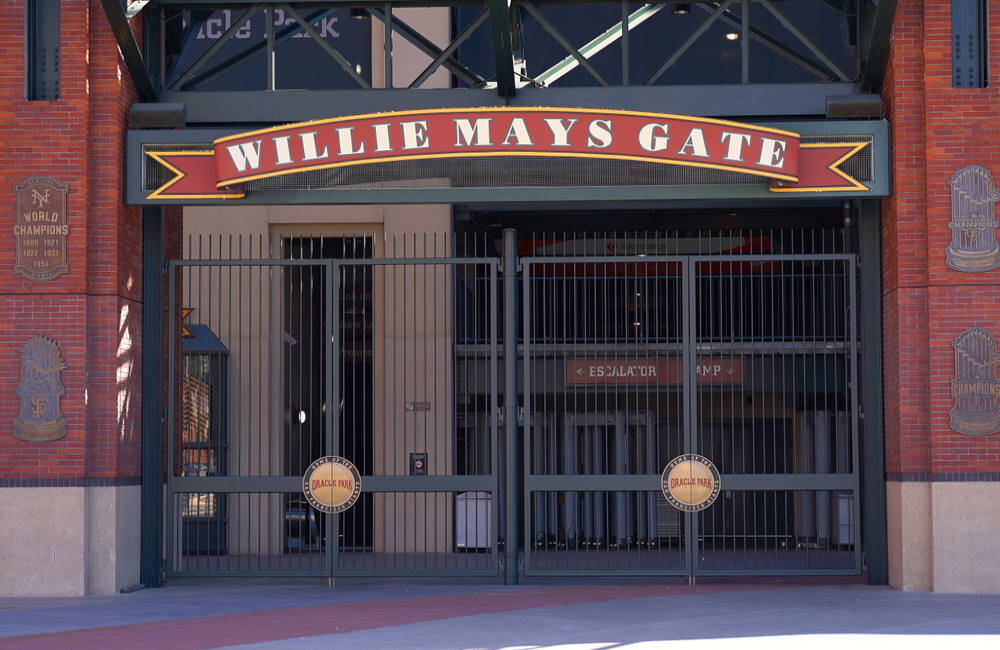Born in a small mill town in Alabama, Willie Mays became one of the greatest baseball players of all time, playing almost his entire career with the Giants organization in New York and San Francisco. May did it all: hit, run and field his position in centerfield as well as anyone ever did.
His most iconic moment came in Game 1 of the 1954 World Series against the Cleveland Indians when Mays caught a hit off the bat of Vic Wertz while running with his back turned to the infield. He caught the ball in this outstretched glove – a “basket catch” – then turned and fired the ball back into the infield.
His first manager, Hall of Famer Lou Durocher, said of Willie Mays: “I never taught him anything. He taught me. Willie is the greatest player I ever saw. No doubt in my mind.”
Best Baseball Moments in the 1990s
Willie Mays’ Early Life
Willie Howard Mays Jr. was born in Westfield, Alabama, on May 6, 1931. The residents of Westfield were mostly Black and worked at the local mill. Mays’ parents split up when Mays was still very young. He ended up raised by his father. Nicknamed Kitty Cat or just plain Cat, his father was a talented ballplayer in semi-pro leagues. His mother was a standout basketball player.
Cat introduced Willie to baseball at an early age, playing catch with him and taking him to his games. His father eventually moved to the town of Fairfield where he worked for the railroad. Young Willie was raised mostly by two aunts. He also had plenty of hardships, writing in his autobiography “Say Hey” that he could remember walking to school without shoes.
Mays attended Fairfield Industrial High School, where he played football and basketball. The school had no baseball team, but Mays played, often along with his father, in leagues in the area. When he was 16, his father introduced him to Piper Davis, manager of the Birmingham Black Barons in the Negro Leagues. Davis ended up being a strong influence on Mays’ life.
5 Greatest Negro League Players
Another influence was Jackie Robinson, who broke the color barrier with the Brooklyn Dodgers in 1947, becoming the first black player in Major League Baseball. Mays later would say that the real breakthrough came in 1946, when Robinson joined the Montreal Royals team the Dodgers farm system, becoming the first black player at any level in the majors. He was signed by Royals owner Hector Racine and Dodgers general manager Branch Rickey.
Mays ended up playing part-time for the Black Barons, because his father, aunts and Davis insisted that he graduate from school. However, he helped the team reach the final Negro League World Series in 1948. The Barons lost to the Homestead Greys.
Willie Mays in the Minors
After graduation, several MLB teams courted Mays. However, he ended up signing for a $4,000 bonus and a $250 per month salary with the New York Giants. Mays and his father signed the contract in the kitchen of the house in Fairfield.
The Giants sent Mays to a Trenton, New Jersey, team that played in a Class B Interstate League, He faced a lot worse competition than what he had seen in the Negro Leagues. He hit .353 with 55 RBIs. He played the next season with the Triple A team in Minneapolis, even though Durocher wanted him at the major league level. Giants ownership resisted.
But after he started the season hitting .477 in 35 games, the Giants called him up on May 24, 1951. Durocher later said Mays was reluctant because he didn’t think he was ready. By the end of the season, he was Rookie of the Year.
How Many Awards Are There in MLB?
Mays in the Major Leagues
What happened next is the subject of books, documentaries and baseball discussions until this day. Mays won the Rookie of the Year award in 1951, hitting .274 with 20 home runs and 68 RBI. He also stole seven bases and earned the “Say Hey” nickname from sportswriter Barney Kremenko, who called him that because Mays, who felt reluctant to talk to reporters, would respond to questions with “say what,” “say who,” “say where” and “say hey.”
In Game 1 of the 1951 World Series between the Giants and the New York Yankees, Mays played in the first all Black MLB outfield with Hank Thompson and Monte Irvin.
Best Moments of Yankees Baseball
After missing most of the 1952 and 1953 seasons while serving in the Korean War, Mays returned to the majors in 1954, winning the Most Valuable Player award and playing on the Giants team that swept the Indians in four games. In Game 1, he made his famous basket catch.
Other highlights from Mays’ career included:
- Making the All-Star game 24 times
- Winning the Gold Glove 12 times
- National League MVP twice
- Leading the National League in home runs four times
- Leading the National League in stolen bases four times
- A lifetime batting average of .302
- A career 660 home runs
- Career totals of 2,062 runs scored and 1,903 RBI
Mays played his final seasons as a member of the New York Mets. After his retirement in 1973, Mays stayed with the Mets as a hitting coach until 1979. He later worked at a casino in Atlantic City and was temporarily banned from baseball and left the Mets. However, in the 1980s baseball commissioner Peter Ueberroth allowed him to return to baseball.
Mays became Special Assistant to the President and General Manager of the Giants in 1986. He also founded the Say Hey Foundation that promotes youth baseball.


Leave A Comment